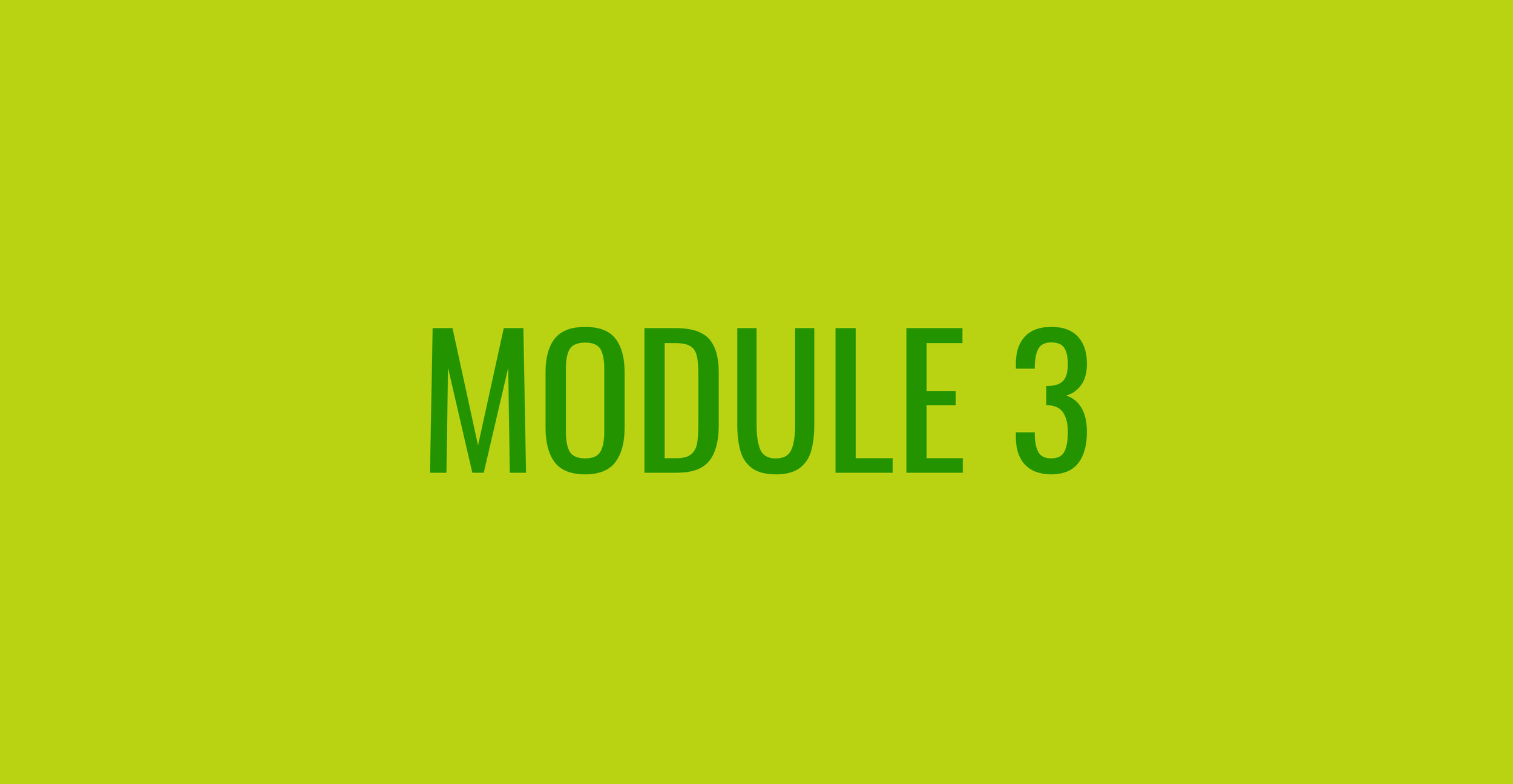
Customers
Welcome to Module 3 which will cover everything you need to know about customers! If you are just joining us, we recommend you start by completing Module 1: How to Write an Application 101 and Module 2: Value Proposition.
Overview
A good understanding of your customers and their needs is the key to providing them better product/services, which leads to strong customer relationships and new sales through positive word-of-mouth recommendation (and repeat business). It also helps you to maximize your time and resources.
As a business owner, you need to tailor your product/service to suit your customer needs. But how do you know their needs if you don’t know who they are? Once you understand your target customers, you can identify the features and experiences they want and shape your offering to meet those needs. Defining your target customer will go a long way to help you better position your product/services accordingly to attract the right audience.
If you know what your customers want and you can clearly articulate what your product/service offers (check out Module 2 on Value Proposition if you need a refresher on this), you can clearly explain the benefits of your product/service to your customers. Understanding your target customer makes it easy for you to effectively manage their expectations; so you can have a group of satisfied customers who will always come back to you for business.
Understanding your target customer makes marketing to them easier. You should know what entertainment they consume, what social media channels they use, and most importantly – what moves them to buy from you. Based on your findings, you’ll be able to tailor messages that resonate with your customers. Better marketing = more sales = more revenue!
Who Is Your Target Customer?
Your target customer is an individual or business that buys your company's product/services. Customers are central to every business because they drive revenue and without them, businesses cannot exist. Before you answer the question, lets first determine if you are running a B2B OR B2C business:
B2B means Business to Business - this means that your business provides products/services to other businesses. For example:
Your business is a smallholder farm that supplies raw materials to food processing companies to use in their manufacturing process.
Your business is a company that manufactures medical equipment for hospitals or other healthcare facilities.
B2C means Business to Consumer - this means that your business provides products/services to individuals. For example:
You curate and sell meal plans to individuals online.
You produce and sell beauty and cosmetics products to women.
The main difference between B2B and B2C businesses is their intended customers. B2B sells to businesses that resell the products, while B2C sells directly to the end consumer. It is also important to note that the decision making processes for B2B and B2C are different. The decision-making cycle for B2C is usually shorter than that in B2B. With B2C sales, the decision-making process is much simpler. It is a personal purchase and depends mainly on the emotion of the buyers, while for B2B, business owners have to work with multiple people within a company and the purchase depends more heavily on alignment with company needs and policies. B2B businesses must keep in mind that there will be many people involved in the purchasing process, so the process is more complicated. Depending on the type of purchases, the final purchasing is influenced by a decision-making group that can include members from technical, business, financial, and operational departments, or the CEO of that company.
To better understand your target customer, it is important to do a customer research:
Who are your current customers, and why do they buy from you? What are their common characteristics and interests? Who are your returning customers and why do they return? It is very likely that people who share the same characteristics as your current customers could benefit from your product/service. You can narrow the details down to:
Are your target customers male or female?
How old are they?
Where do they live?
What is their marital status?
Do they have children? How old are their children?
What is their education level?
What do they do for a living?
What is their average income?
How do they spend their time?
Example: A fashion boutique in Kampala would identify their target customer as a 45 year old married woman who has a high disposable income and whose children are fully grown. She has time to spend her day shopping for herself. She prefers higher end items that she can wear to parties and social gatherings.
Who are your competitors, and who are your competitors targeting? Who are their current customers? While you don't want to go after the same exact market your competition is targeting, this insight might provide you the opportunity to find a niche market that no one is targeting.
Identify your customer goals and pain points. What motivates your customers? What problems are your potential customers trying to solve? What’s holding them back from success? What barriers do they face in reaching their goals? What motivates a customer to make a purchase?
Analyze your product/service - what are the benefits of your product/service? Who are the people who have a need that your benefit fulfills? This will help you identify where your products/services fit in the market and how they differ from your competitors. You should think beyond the features of your product but the benefits; a feature is what your product/service is or does, while a benefit is how your product or service makes your customer’s life easier or better. Think of your product/service as a solution to your customer’s problem.
Where can you find information about your Target Customer?
You can conduct customer research externally using existing data sources, or you can conduct the research internally by speaking directly to your customers.
Industry trends, demographics, and household incomes are useful existing resources to explore when conducting customer research. They will help you answer questions that are general to your industry and quantifiable based on real customer data. Here are a few methods to gather existing resources:
Search online for research others have done on your industry
Search for magazine articles and blogs that talk about or to your target customers
Search for blogs and forums where your target customers communicate their opinions
Direct research includes speaking to your existing customer and potential customers. Asking your customers about their habits and needs gives you a better understanding of your specific target audience. Direct research helps you answer questions about benefits of your product/service, ways to improve your product/service, where your customers might go instead of your business, etc. Here are a few methods you can use to do direct research
Surveys or questionnaires (easy to send via email after a purchase)
Focus groups (virtually via Zoom or in-person if you have a storefront)
Interviews (either quick questions via conversation with customers during their purchasing process or via follow-up conversations)
Now that you have done all your research, you can start looking for common characteristics. As you group these characteristics together, you’ll have the basis for a unique customer persona. A customer persona is a detailed description of someone who represents your target customer. This persona is fictional but based on deep research of your existing or desired audience.
A customer persona helps you focus on addressing your customer needs instead of your own. After creating a customer persona, you will think of this persona every time you make a decision. For example - does a new product fit the needs and goals of your persona? If not, you have good reason to reconsider your plan, no matter how exciting it may be to you and your team.
If you can design accurate personas, you will then be able to build a bond with the real customers they represent, thereby boosting your sales and brand loyalty.
Learning Tools
AWEC is an experiential, applied learning program, which means we promote business growth by having fellows immediately apply what they learn to their own business. We have created the following tools to help you apply the knowledge from this module to your business. We encourage you to download the tools below to strengthen your application AND your business!
Customer Persona
Instructions
The best way to understand your target customer is through a combination of demographic AND behavioral research. Building a customer persona - a hypothetical description of your ideal target customer - provides an opportunity to explore both who your customer is and what motivates them to make purchase decisions. The AWEC Customer Persona tool provides space to conduct research and reflect on your target customer. On the left side of the template, you can use external research to assess your customer demographics. On the right side of the template, you can use internal research (by talking to your customers!) to understand customer feelings and actions.
Well done to you for completing your third module. You can now move on to Module 4: Target Market & Market Size.






